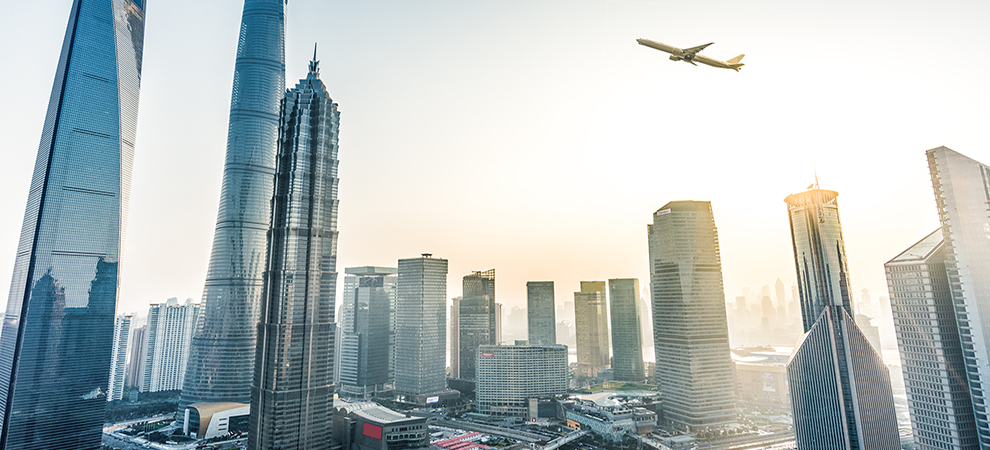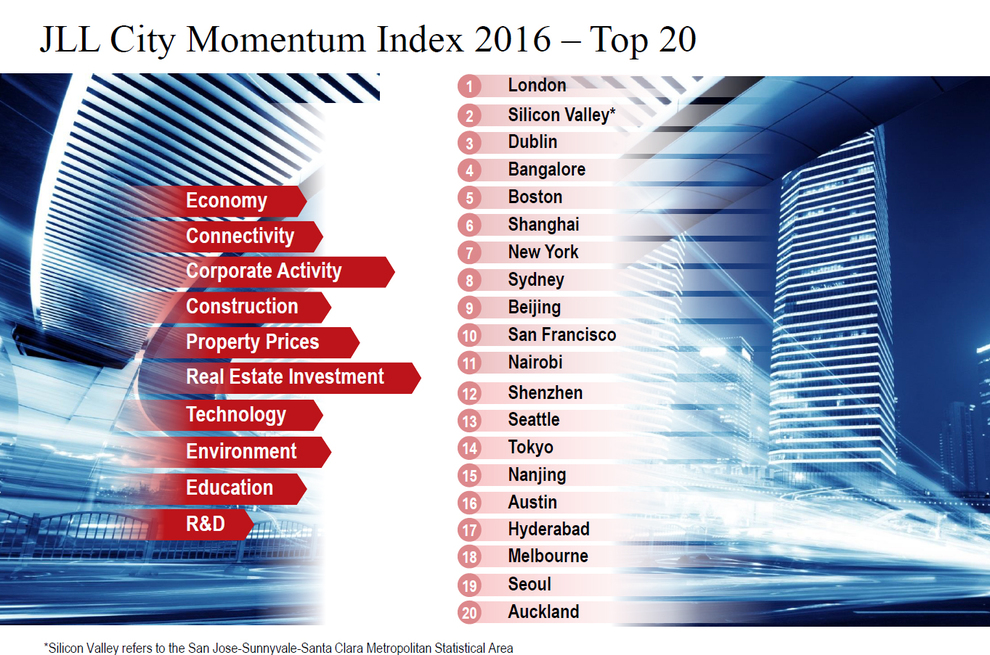Cities of the Future Adopt to Change and Leverage Innovation, Says JLL Index

London, Silicon Valley, Dublin, Bangalore and Boston top the list by successfully creating environments that attract cutting-edge new businesses, nurture top talent, leverage technology and provide vibrant, inclusive communities.
While the 2015 CMI Top 20 included several tech-focused hubs, the 2016 CMI Top 20 features many cities which are home to the world’s most vibrant mixed-use districts that are thriving not only with respect to technology, but also around their ability to incubate and commercialize new ideas. These well-connected city districts, often featuring numerous higher education and research institutions, promote connectivity, co-production and open innovation.
“Real estate is a major factor in city momentum as it can enable productivity, creativity and entrepreneurship while creating a sense of community for its citizens in a sustainable urban model,” said Jeremy Kelly, director, global research for JLL. “Real estate no longer simply houses businesses – it attracts corporations and talent, and cities need to ensure their built environment provides the smart, productive commercial buildings that corporations, capital and talent now demand.”
Highlights of the CMI Top 20 include:
- Strong momentum of ‘Established World Cities’, as well as their ‘Challengers’. London (1), New York (7) and Tokyo (14) remain on this year’s list, while others such as Shanghai (6), Sydney (8) and Seoul (19) are increasingly competing for global reach and influence. The presence of the ‘Established’ and ‘Challenger’ cities on the 2016 CMI Top 20 reflects their highly globalized economies, strong infrastructure and deep concentrations of corporations, capital and talent. They are also looking to future-proof their economies by executing bold urban transformations.
- Increasing momentum in U.S. ‘New World Cities’. This year’s CMI Top 20 includes the Silicon Valley area (2), Boston (5), San Francisco (10), Seattle (13) and Austin (16). Representing a larger share than last year’s CMI, these U.S. cities are dynamic technology centres that are seeking to proactively use real estate to foster sustainability and liveability.
- Innovation driving ‘Agile Higher-Value Emerging Cities’. Bangalore (4) and Shenzhen (12) are home to some of the world’s fastest-growing tech companies, and Nairobi (11) is also making a concerted effort to move up the value chain and improve global connectivity.
- Smaller cities achieving global reach. The relatively smaller cities of Dublin (3), Austin (16) and Auckland (20) are gaining rapid momentum and competing in highly contested global markets. Although they have some of the smallest populations in the CMI, they are among the most dynamic city economies globally and have achieved global reach without significant economies of scale.
- Asia Pacific showing strength. India increased its representation in the Top 20 with Bangalore (4) joined by Hyderabad (17), both of which are growing rapidly and taking steps to build out their infrastructure and foster high-tech economies. China’s cities of Shanghai (6), Beijing (9), Shenzhen (12) and Nanjing (15) are building the foundations for new forms of economic activity in terms of innovation, infrastructure and connectivity. Finally, Australasian cities continue to exhibit strong momentum with Sydney (8), Melbourne (18) and Auckland (20) in the Top 20.
The 120 cities covered by the CMI were assessed using 37 variables including recent and projected percentage changes in city GDP, population, corporate headquarter presence, office construction and office rents. Other factors included education infrastructure, environmental sustainability and the strength of a city’s technology capability, among others.



